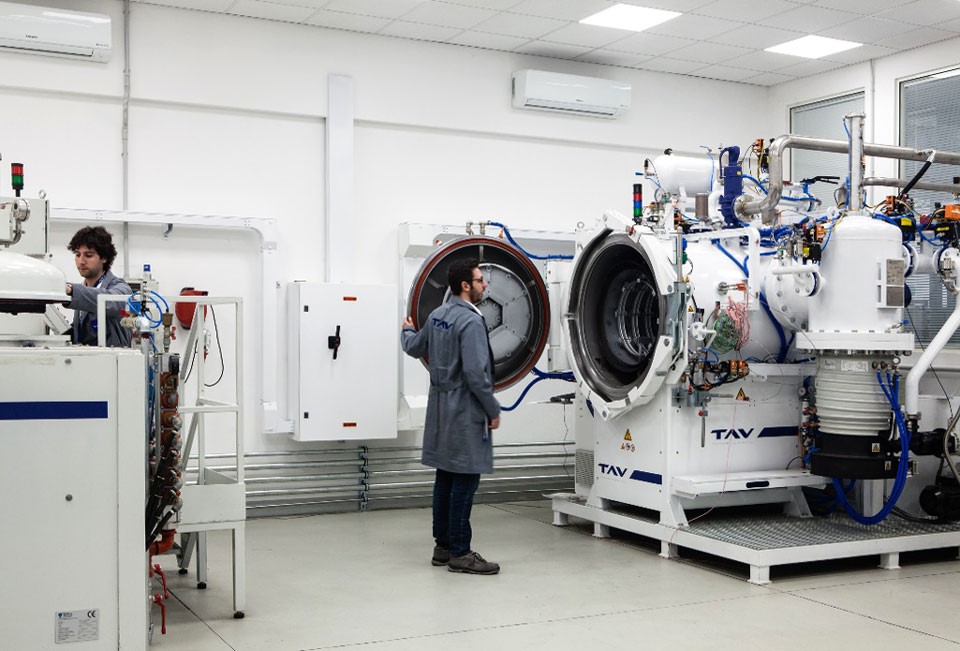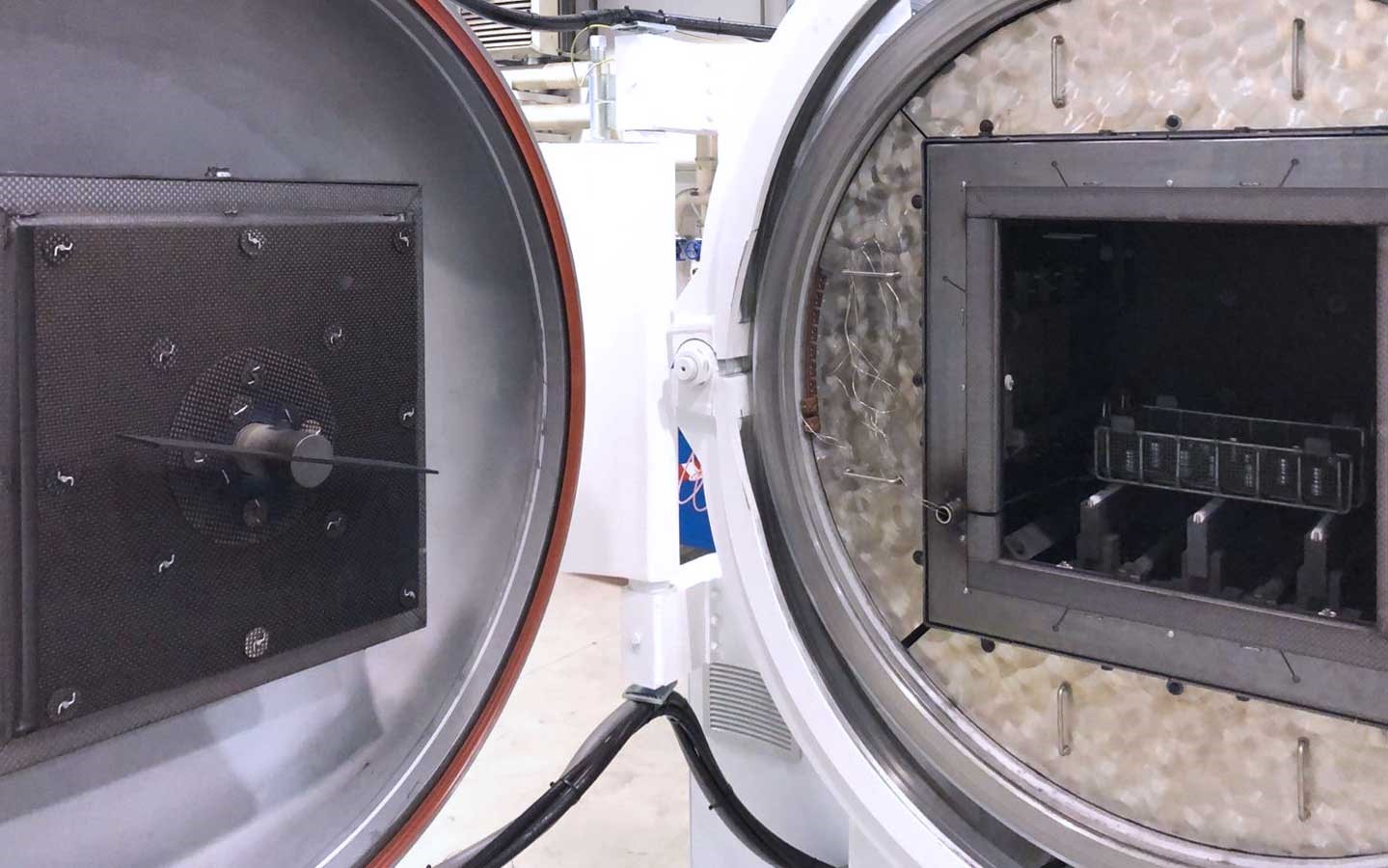Held between 29-31 January 2020 in Berlin, Germany, the World Money Fair gathered together thousands of coin collecting enthusiasts, metal working businesses, and we were there.
Much more than just a jamboree for hobbyists, the WMF is a major trade event, where deals are done and ideas are shared. That's why the team at TAV VACUUM FURNACES was invited to attend.
As part of the packed program of guest speakers, we had the chance to explain how vacuum heat treatment works, and how it applies to coin production. And we really made an impression.
In this article, we'll look at the WMF itself, and offer some insights from the TAV VACUUM FURNACES team that should be relevant for anyone in the minting industry.
So don't click away.
Getting to know the World Money Fair
Before we run through some of the insights we shared, it's important to know more about why we visited Berlin for the WMF, and what makes it such a prestigious gathering spot for major players in the currency world.
The event was founded in the 1970s by Albert M. Beck - who was the prime mover behind the creation of a global market in historic and contemporary coins. The idea behind the event was to act as a "bourse", or marketplace, for the world's coinage.
This wasn't a fringe issue, either.
From the 1960s onwards, premium coins became a popular investment choice, due to their ability to hold their value for long periods. That hasn't changed, and large amounts of money still change hands every time the WMF opens its doors.
Nowadays, all major central banks and private collectors are represented, with more than 500 exhibitors. And the technical side of coin production has also become much more important, showcasing innovative manufacturing techniques, or ways to maintain or restore damaged coins.
Naturally, a major vacuuming furnaces company like TAV VACUUM FURNACES is involved in these processes, and our technical knowledge is sought by currency businesses from across the globe.
Our presentation to the 2020 World Money Fair
When we took to the stage this year, our aim was clear: to explain what TAV VACUUM FURNACES has to offer on the technical side, and how our services differ from all other metalworking companies.
As we explained, we operate a laboratory on the same site as our main vacuum heat treating furnaces.
The TAV LAB allows us to maintain strict quality control procedures, ensuring that all processes are carried out according to customer specifications, with minimal imperfections. And it's also a way for us to learn more about materials and machinery, making us more effective with every job we do.

The TAV LAB
So that was our first major point, we offer a combination of pure vacuum heat treating products and other metalworking processes, alongside sophisticated laboratory analysis - putting us in another league relative to many other operators.
How a vacuum furnace relates to the minting industry
However, we haven't yet reached the most important part of our presentation.
As the presentation outlined, our services are extremely relevant to the global minting sector. In fact, we already work closely with minting organisations worldwide, supplying the vacuum furnaces they need.
Vacuum furnaces are in demand because they offer the kind of accuracy that minting requires.
When coins are manufactured, they must adhere to the strictest possible accuracy requirements.
If there are major differences between each coin, then the whole process is pointless.
Instead, mints need a way to turn their master dies into hundreds of thousands (or millions) of almost exact replicas.
And that's not easy.
Doing so demands that working dies (copies of master dies that actually leave their impress in coin materials), have the correct strength and a perfect copy of the coin-face design.
To be more precise, they need to meet the UNI ISO 4957 standard for cold working steels - exhibiting high toughness, brightness, and durability.
As you may have guessed, vacuum furnaces have a major role to play in ensuring that working dies possess these properties.
Did you like this article up to here?
Before you continue, follow us on our LinkedIn page pressing the button here below!
In this way, we'll be able to keep you updated on most advanced technologies for heat treatments not only with our posts, but also with the best articles that we collect around the web.
Why vacuum heat treatment for working dies is so important
Vacuum heat treatment is an essential part of modern coin production, offering a way to anneal and harden metals for the stamping process. But there are many ways to configure vacuum furnaces for the task, and many ways to do so improperly.
Our role at WMF 2020 was to demonstrate the correct process.
For metals to be hardened to the level required, vacuum furnaces need to be completely free of impurities which can contaminate the materials being used and render them much weaker than they need to be.
At the same time, inert gas needs to be supplied at the right heat and pressure levels, allowing the hardening process to complete properly.
How coin minting works in practice
During our WMF presentation, we were able to use a couple of working examples to show how this works:
- In one case, a client asked us to process 20 steel dies with diameters ranging from 50-60mm. These dies then needed to be hardened to around 62-64 HRC, at both the surface and the core.
- To carry this out, we placed the dies on an Inconel support (as Inconel is extremely resistant to extremes of heat and pressure), with a steel grid. Two load thermocouples were applied to monitor temperatures, and the dies were then placed in a graphite furnace to start the hardening process.
- This entailed steadily heating to an Austenite level, before using pressurised nitrogen to apply rapid cooling. In the process, the dies increased in hardness to the required level, meeting the specifications laid out by our client.

Inconel support in the hot chamber
Thanks to the analytical capabilities of our lab, we could monitor temperature, pressure, and hardness to extreme levels of detail.
That's why we can achieve precise outcomes on such a reliable basis.
How the quenching system mixes precision and sustainability
However, our minting procedures go beyond the provision of precise hardening specifications for working dies. The way we have designed our graphite furnaces also puts them among the most efficient in the world, helping us to meet our environmental goals.
During the annealing, hardening, and tempering process, furnaces require the injection of inert gases to speed up the cooling phase. This could involve nitrogen (as above), but more commonly uses helium. In either case, the inert gases are expensive and scarce, and making efficient use of them is extremely important.
TAV VACUUM FURNACES has pioneered the use of gas recovery systems in our minting furnaces. This recirculates helium that is used in cooling, while filtering it for impurities - a key requirement for hardening treatment. By doing so, we can keep our environmental footprint low, while making no sacrifices in terms of quality.
Then there's safety.
The pressure and heat involved in minting procedures means that workers can be exposed to serious health risks. A good vacuum furnace uses overpressure detectors and mechanical rings to prevent frontal door opening, minimising those hazards.
As you can hopefully see, everything comes together in a vacuum heat-treating setup that is capable of meeting client demands to a high degree of accuracy, while limiting environmental damage, and maintaining worker safety.
That combination is why our presentation was well attended by manufacturers and mints from across the globe.
Working with mints to create the coins of the future
Our exposition at the 2020 World Money Fair wasn't just a chance to educate attendees about how hardening works, and how coin manufacturing can be made more efficient. It was also a chance to showcase the quality needed to serve almost any kind of currency manufacturer.
As we stressed, TAV VACUUM FURNACES is ready to work with clients on whatever challenges they face. Most importantly, we are well positioned to work with mints that are keen to adopt additive manufacturing. This relatively new technique is being enthusiastically embraced by many coin designers, as it allows rapid prototyping and maximum flexibility.
TAV VACUUM FURNACES has been working with additive manufacturing (and 3D printing) for a long time, and we know how to ensure that prototypes can be translated into strong, easily replicated coinage. And we continue to innovate with new powder alloys and furnace settings, to work out bespoke solutions for customers.
Even if you didn't attend WMF 2020, we would love to help with your upcoming coinage related projects.
The minting sector is constantly changing, and we are adapting as new ideas emerge.
So if you want to benefit from the latest techniques, and require optimal quality standards, get in touch.

Do you like this blog?
For us your opinion matters, so we would be very pleased if you could write a review about us or our blog.